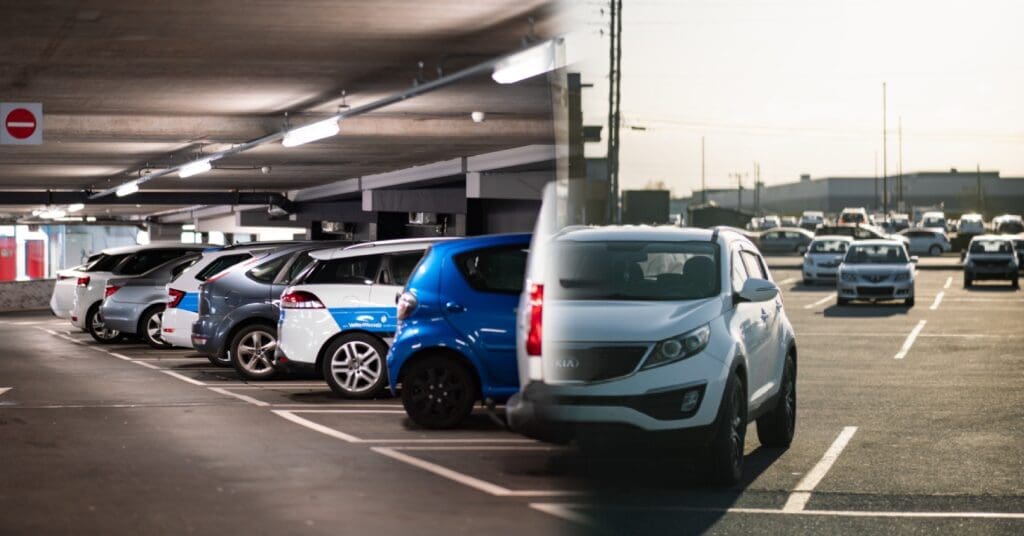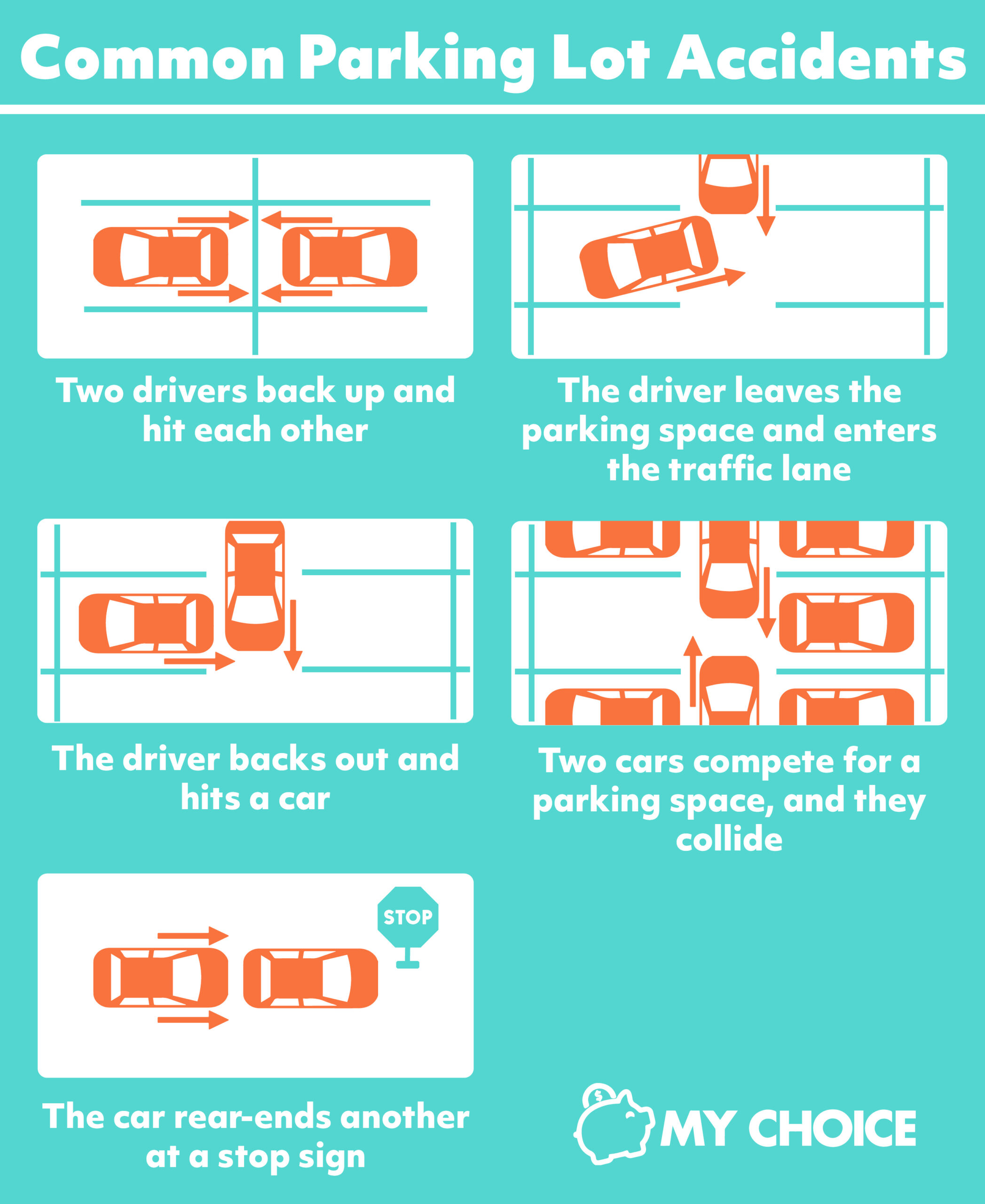
Accidents in parking lots occur on a regular basis in Canada. The combination of vehicles, pedestrians, cyclists, shopping carts, and even narrow driving lanes can create hazardous situations.
Given all the variables involved, it’s no surprise that parking lot accidents occur. Statistics show that they are more common than what most people think, in fact one in every five accidents occur in parking lots and almost all of them can be avoided.
While the majority of parking lot accidents are minor and involve an impact at low speed, they can still cause serious damage and injury. They can also have a significant impact on your auto insurance. That is why many incidents are not reported and parking lot hit-and-runs are common.
What Do You Do If You’re in a Parking Lot Accident In Ontario?
Many people assume that just because an accident occurs on private property and not on a public road, you should react in a different way. However, parking lot accidents should be treated the same as any other car accident.
Firstly, if you are involved in an accident, make sure that none of the parties involved are injured. If they are hurt, you should call for help right away. If the damage exceeds the $2,000 limit in Ontario or Alberta, you should contact the police and file an accident report. It’s important to exchange information with all parties and notify the insurance provider.
If you don’t report the parking lot accident, you can still receive a ticket after and it won’t be as cheap as a parking ticket. Also, the other driver can still file a claim with their insurance company and determine that you were entirely or partially at fault for the accident, in this case your insurer may increase your rates without notice.
Who is at-fault in a parking lot accident?
The cause of parking lot accidents is frequently misunderstood, fault is determined on a case-by-case basis, just like in any other car accident. Due to the variety of factors at play, determining fault in a parking lot accident can be difficult.
Drivers moving in the parking lot have priority over vehicles exiting a parking space. This is an important consideration when determining fault. In some cases, one driver is solely at fault, while in others, both drivers share blame.
Common types of parking lot accidents?
The five most common types of parking lot accidents are:
- Two drivers back up and hit each other.
In this case both drivers are at fault and neither has the right of way. The insurance company is most likely to determine that both drivers share fault 50-50.
- The driver leaves the parking space and enters the traffic lane.
Because in this case both cars are moving, they are likely to share the blame. There is a traffic lane that has the right of way in a parking lot. The driver leaving the parking space will bear most of the blame. This could result in a 75-25 split.
- The driver backs out and hits a car.
Again, both drivers are equally responsible, but the driver backing up does not have the right of way and should wait until it is safe to back out. As a result, they will bear the brunt of the blame.
- Two cars compete for a parking space, and they collide.
So, both vehicles are moving, but one of them must make a left turn across traffic, whereas the right turning driver does not have to wait. The left-turning driver should have yielded to oncoming traffic and, as a result, will bear most of the blame in the collision. Other factors, such as how far each vehicle was into the parking spot and the speed of each vehicle when the parking spot accident occurred, will be required.
- The car rear-ends another at a stop sign.
If you collide with a parked car from behind, whether in a parking lot or on the road, you will bear the brunt of the blame. Even if the driver comes to an unexpected stop, the vehicle in motion should have left enough space between themselves and the vehicle in front to avoid rear-ending the stopped vehicle.
You are most likely to blame if you hit a pedestrian or cyclist. If you hit a median, curb, shopping cart, or traffic sign, it’s entirely your fault.

Parking lot accident: Hit & Run
A hit-and-run in a parking lot is terrible because if you can’t identify the driver, you’ll be responsible for the repair bill. Let’s analyze both situations.
A driver hits my car and drives away
Getting hit by another car is unfortunate no matter the circumstances. In the event of a hit-and-run in Ontario, you can rely on your collision insurance and iff you have it, you’ll have to pay a $500 to $1,000 deductible. If the damage is less than the deductible, there’s no point in filing a claim because you’ll end up out of pocket. Your auto insurance provider may classify it as uninsured auto and assume the fleeing driver lacked insurance, so you won’t have to pay a deductible.
If potentially near security cameras identify the driver, your insurer will pay for the loss in provinces where direct compensation property damage (DCPD) exists.
I hit another car and escape
Proof is how you handle any hit-and-run in a parking lot so driving away is not a good idea. So, what you can do is to leave a note with your contact information where you can work the details out afterwards. Otherwise, if you get identified but were judged to have just left the scene, you are considered a “failed to remain”. Failure to remain at the scene of an accident is punishable by a fine ranging from $400 to $2,000, seven demerit points, license suspension, and a significant increase in your car insurance rates.
Do Parking Lot Accidents Affect Insurance?
Insurers treat parking lot accidents the same as any other type of accident. They use the same rules to determine who caused the accident, and if you are found to be at fault, it can affect your car insurance quotes.








